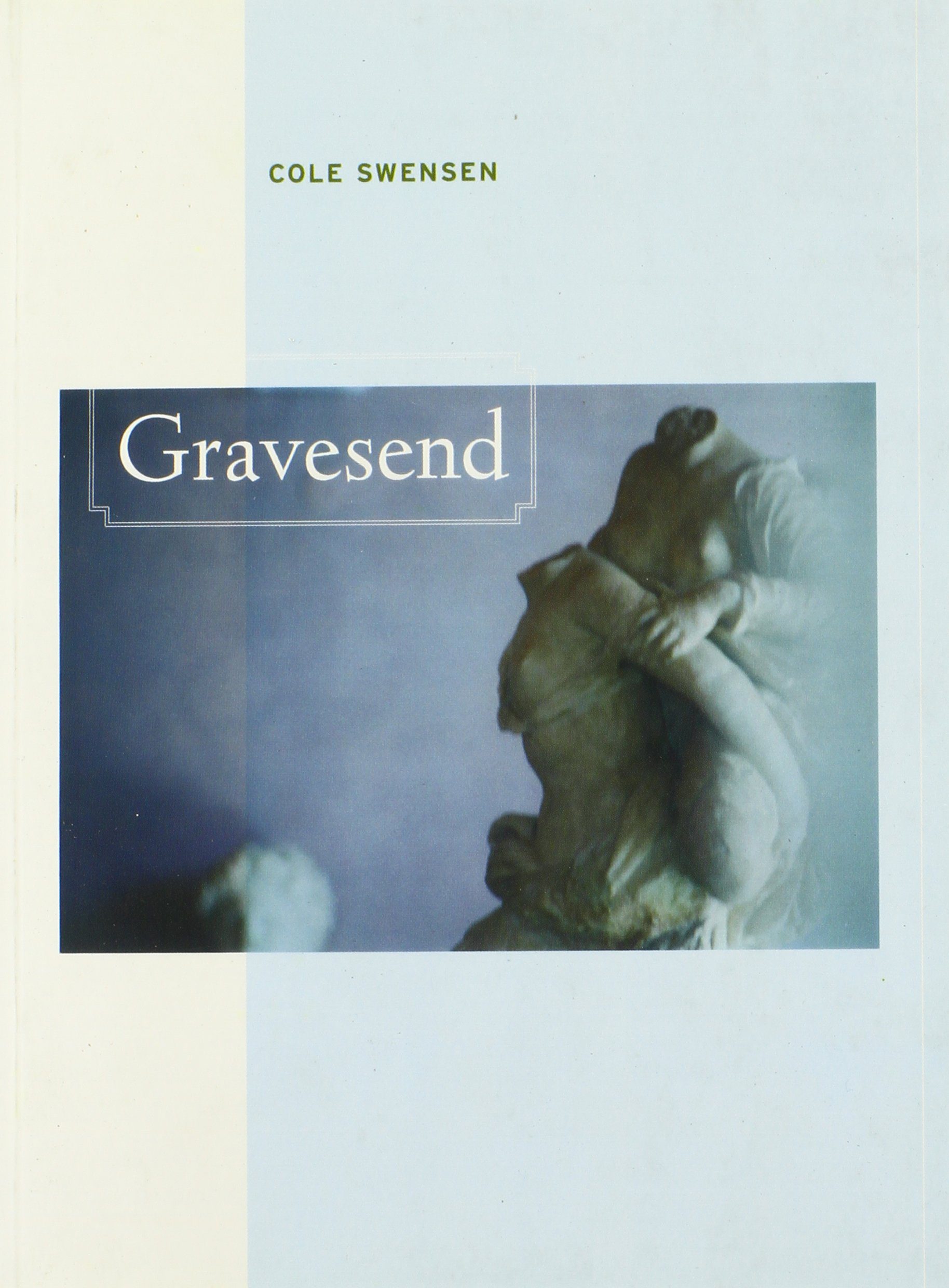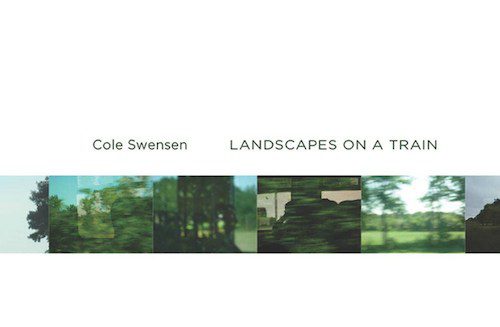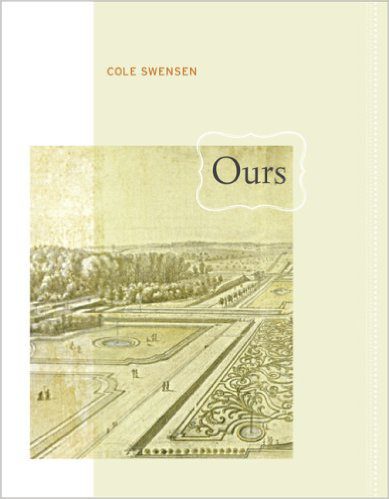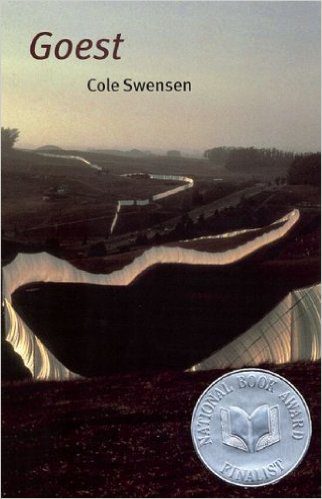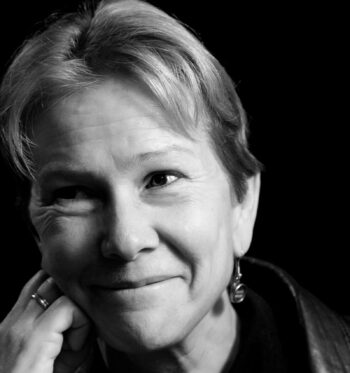
Cole Swensen is the author of fifteen collections of poetry, most recently, Gravesend and Landscapes on a Train, as well as a chapbook, Walk. Her work has won the Iowa Poetry Prize, the New American Writing Award, and the National Poetry Series and has been a finalist for the National Book Award and twice for the Los Angeles Times Book Award. A 2006 Guggenheim Fellow, she is the co-editor of the 2009 Norton anthology, American Hybrid, and the founding editor of La Presse. Also a translator, she won the 2004 PEN USA Award in Literary Translation.
Swensen has taught at the University of Denver and the Iowa Writers’ Workshop, and currently teaches at Brown University. She divides her time between Paris and Providence, RI. We spoke through email about walking and her recent travels.
***
The Rumpus: What objects do you bring along when you walk? Do you ever pick things up? Do you have any rules for yourself, or rituals?
Cole Swensen: No, I’ve never thought about it specifically, but in fact I neither take anything along nor take anything away. My focus is on the rhythmic relationship between body and ground and the visual relationships among the elements of the always-changing scene.
But yes, sometimes I do have rules, or rather constraints. One I’ve been working with lately, for instance—and it only works in urban spaces—is the single constraint of turning left whenever I encounter an obstacle, something that makes me stop, such as a traffic light or a T intersection or crowd congestion. I’ve been doing a series of these walks this fall, always starting from the same place and always for the same length of time, to see how differently the walk develops. I end up in very different places.
Rumpus: This is a fascinating constraint. Have you ever looked at these walks visually? Drawn them up on a map to see the shapes?
Swensen: Yes! Exactly! I’m so glad that comes to mind! I do draw them out on a map, and in that way, the kinetic experience becomes a visual work, and the perspective that has been linear and time-based suddenly becomes bird’s-eye-view spatialized. I have also then retraced the lines on a separate sheet of paper, thus removing the map and turning the lines into an abstract drawing.
Rumpus: In an essay for The Rumpus, the poet Ocean Vuong talks about walking as a formative experience. He was seventeen and had just moved to New York:
I love going on walks by myself. No pressure to keep up conversation. And there is something about movement that helps me think. To charge an idea with the body’s inertia. To carry a feeling through the distance and watch it grow.
Do you often walk by yourself, or with others?
Swensen: Thanks for directing me to Ocean Vuong’s piece. I found it so striking! And I love that part that you quote—the idea of “carrying a feeling through distance”—very different from carrying a feeling through space, for instance. I usually walk alone. I walk to my writing. At the end of every day, I walk for thirty minutes to an hour to one of a number of cafés and write for about an hour, then walk back. I also walk simply for transportation, in which case, I frequently walk with someone else—whoever is going my way.
Rumpus: I’m curious about who you were when you were seventeen. You’re a San Francisco native. Were you still living there? What were you like as a teenager? What role did movement play in your life then?
Swensen: That’s a great question to ask anyone! I’m afraid I was just generally rebellious, and was no doubt a real trial to my fabulous family. I’m lucky they didn’t throw me under a bus. This would have been the mid-70s, and I was a card-carrying hippie, and poetry was the most important thing in my life. Creeley was my hero, along with the whole enclave of poets of his generation who lived in and around west Marin—I’m actually from Marin, the county just north of San Francisco, and the county, particularly the western part around Bolinas and Point Reyes, was an exuberant place of alternative living at the time. It was also a time when North Beach in San Francisco still operated as a community, and I would drive in with older poet-friends and go to cafés and sit on the periphery of poetic conversations. Both Bolinas and North Beach offered examples of community that no longer seem possible—it’s a shame—they were wonderful models of living the art with peers in a very daily, a very casual and friendly way.
Rumpus: This might be a tough question to answer, but why do you think these communities no longer seem possible?
Swensen: It is a hard question to answer, but I think economics has a lot to do with it, but perhaps above all, our relationship to time, which has changed so much in response to technology—and in response to economic pressures. They go together to disperse people and keep them moving forward, not lolling about in the margins. It’s a shame.
Rumpus: You mentioned earlier that you’re traveling through eastern Germany. Have you been walking a lot there? Can you describe one walk?
Swensen: Yes, I did get in some wonderful walks on that trip, above all, along the Elbe River, particularly as it goes through Dresden. The Elbe is blessed with amazing flood plains—and I imagine they’re there because it floods a lot, at which point, the “blessing” may seem to the locals rather mitigated. But I happened upon the region (early October 2015) during a drought. So the river was very low, but the flood plains were thriving and vibrantly green. And the city of Dresden lives them in an incredibly vibrant way—everyone is out there with their dogs, children, friends, grandparents, neighbors, etc. I was struck by the variety of people—age, race, intent—and they way they all used this seemingly endless, unfurling space with such a vivid zest. I happened to have been there on the 25th anniversary of the unification of Germany, which was a much celebrated moment, but I think, in fact, the people I was passing and observing were those who’d chosen not to participate in the civic, historical gesture, but simply to spend the day with their families or friends, so what I saw were incredibly various uses of urban green space, and to be able to walk along it for literally miles was an outstanding pleasure.
Rumpus: I loved the line in Walk, the chapbook that Essay Press published from On Walking On, “It is my job to be a stranger, and I repeat the words “vast” and “immense” in order to remain so.” While reading Walk, one thing that especially struck me was scale, and how the oddity of different sizes of things affects the strangeness and defamiliarization of them. For instance, there’s “an antelope the size of an earring.” “Huge fields and tiny flowers somehow attain the same stature.” There are tiny watches and toys that fit the palm. Can you talk about the sense of scale you felt when looking at the flood plains, the families, the Elbe?
Swensen: Interesting! In that reading your comment immediately after having written the response above about community, I realize that I have accepted what seems to me as the contemporary impossibility of true community (a life lived together) by embracing a rather opposite interest in the anonymous—the vast, the immense—precisely that that is not intimate, not within reach.
But speaking specifically of scale, I’ve always been interested in the principle of the fractal, which is typified by self-similarity across scale, which both puts a lot of pressure on a specific viewer’s perspective and opens up the number of “correct” viewing positions infinitely, in this way thwarting the power-related implications of traditional, Renaissance single-point perspective. As far as looking out over the flood plains and all the people using them, it was a bit of the same paradox—the vastness was so striking—beautiful and inviting and headed outward, while the people, so engaged with friends and/or family were the opposite, were pulling in, creating a warm attractive gravity among them. And in a sense, a river—any river—also always offers both, a vastness and an intimacy. Rivers are always impersonal, anonymous, and yet one feels instantly in a very personal relationship with them.
Rumpus: What was it like being in Germany on the anniversary of the unification? I’m thinking of your introduction to Walk, when you write, “Displacement is also a mode of occupation, one that writing and walking have in common, one that amounts to an instance of witness, with witness defined as the act of being present to something, whether it’s an event, a situation, a person, a view.” Can you talk about this as an instance of witness? I’m curious as to whether you felt separate from the historical gesture, or involved somehow, or affected?
Swensen: You’re making an interesting and very appropriate connection here between the celebration of unification and witnessing, as, in fact, I felt, and was, completely outside it. I was one of no doubt many witnesses who had no connection to the event, and so were in a better position to anchor it in time. I’m not suggesting “objectivity” or anything of the sort, but rather disinterestedness, which can allow one to be present in a way that objectivity cannot, and can therefore register the presence of such an event as presence and as event at the same time.
Rumpus: Being present during major events, and also impartial, is often fascinating to me. I happened to be in Cambodia the day King Sihanouk died, among other tourists and expatriates and travelers with no emotional connection to his passing. But I’m not sure I quite understand what you mean by being better able to anchor such events in time. Can you say more about this? About registering the presence of an event as presence and as event?
Swensen: It’s inherent in the role of the witness. If you’re deeply engaged in an event, you’re part of it. You flow along with it, but if you’re outside of it, truly disinterested, you are the regard that registers history, that records the event and turns it into an historical one. And I think that disinterestedness is importantly different from objectivity. The objective view sees only the event, while the disinterested one participates as well as views by creating that link to history. It’s a type of viewing that’s both inside and out of the event, that brings to the viewing the capacity for human emotion, for compassion, but holds it openly, evenly. Objectivity, on the other hand, excludes the human element, and is therefore not a point of view open to humans.
Rumpus: How does being in unfamiliar places affect your writing? Or was Dresden a place you’ve been before? I believe you went to Paris on this trip as well, right, to give a reading.
Swensen: Being in unfamiliar places has no effect on my writing, except that it often means I’m caught up in the logistics of travel, the places and people on the spot, etc., etc., which can mean that I don’t have the time to write. But I try, wherever I am, to take a couple of hours in the early evening to go off and write. Because I never write from personal experience, per se, where I am makes no difference except for this element of available time. And yes, I did go to Paris on this trip, but actually, I spend almost half the year there, and have done for the past twenty years—it’s something about pace and scale that attracts me—you can walk almost everywhere, and the buildings are all around seven stories, which, though tall, is a very human scale.
Rumpus: What were your walks like in Paris?
Swensen: Walking has been my principal mode of transport in Paris for twenty-five years, so your question makes me think about the difference between “a walk” and “walking”—something that this book project had me thinking about constantly as well. They are different. “Walking” is goal-oriented, and I have a gait that I think of as “transportation speed”—its purpose is to get you there, and it often does so faster than the metro or the bus. But when taking a walk, the walk and the walking are themselves the goals, and it’s on those occasions that I incorporate chance or a constraint—though I’m often just led by whim. There is a series of poems in On Walking On that chronicle evening walks around Paris that were taken with observation as the goal—in that case, the constraint was to not think, but to project the attention constantly outward, observing.
Rumpus: Landscapes on a Train, a book influenced by the history of landscape painting, just came out this past October from Nightboat. You’ve said you’re always sorry to end each book, and that some projects remain with you longer than others, such as Ours. What are you working on next?
Swensen: I’m starting on a series of what would, I guess, be called “lyric essays,” with a strong emphasis on the lyric aspect, which sometimes dissolves completely into sound, on the works of a number of artists. More than usually, I’m not sure it’s going to work—I feel very much at the beginning of the project.
Rumpus: What are your concerns with sound? What are you looking to explore with sound in these essays, or what is important for you to work through?
Swensen: Rather than thinking of sound and sense as two opposing principles, two perpendicular trajectories, as they are often considered in conversations around translation, or even as two disassociated phenomena that can be brought together to collaborate with more or less success, I think of sound as sense. Sound has its own meaning, and it’s one of the many non-semantic dimensions of meaning in language. Sounds—and even more, sounds in relationship—have been alongside me throughout this project, and often in the lead—I’ll let sound make the word choices, so that sound is leading semantics rather than vice-versa. And yet there’s an essay component to these pieces, things that I want to say, so that the formal dynamic between language-as-information and language-as-art-material gets emphasized. I want to emphasize it, yet at the same time erase it. I haven’t been able to, but it has led me to thinking also about the colors, the tones, and the tenors of words and phrases.
Rumpus: And, last question, how do you generally feel at the end of a project? How did you feel at the end of On Walking On? How do you know when something is ready to set down?
Swensen: I miss the material. I pick subjects I love and then get very engaged with them, so stopping that engagement often feels odd and arbitrary, but there’s a moment when I don’t want to change anything else and when the shape and length feels right. At that point, continuing would be destructive.

